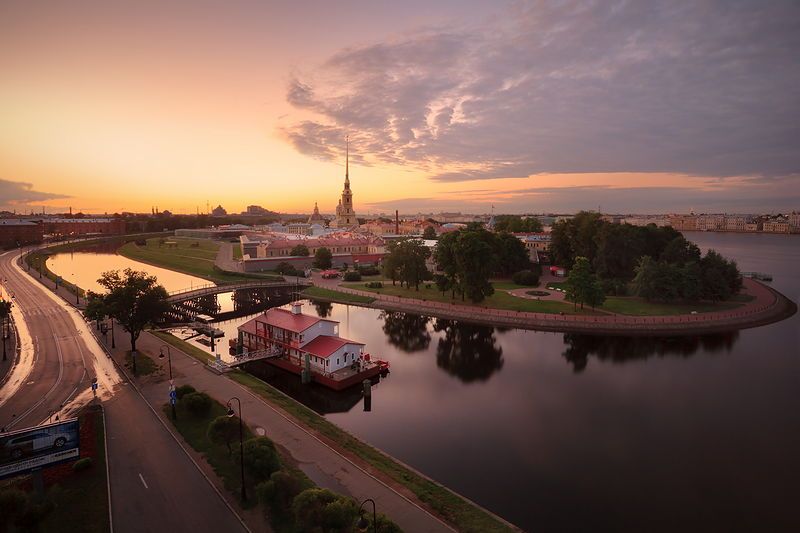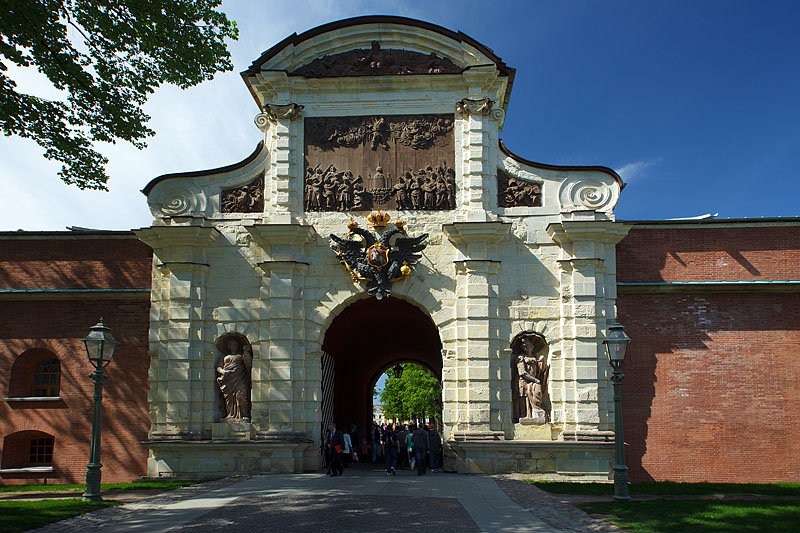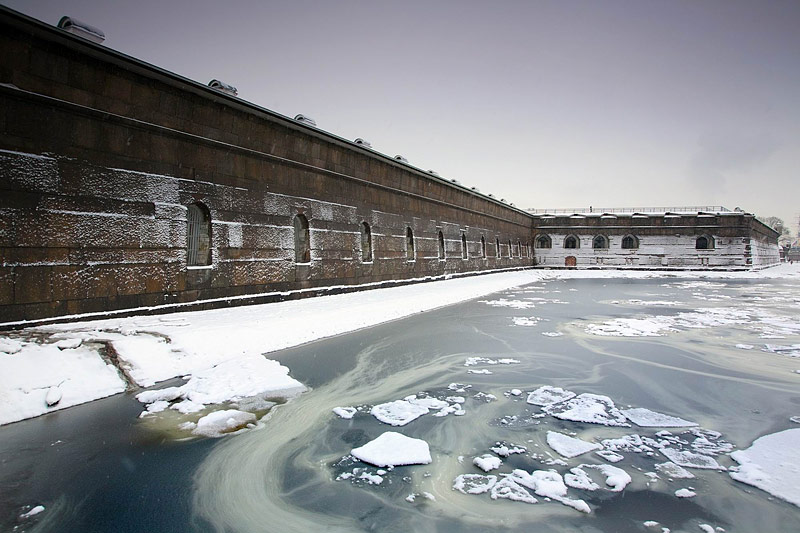Short history of the Peter and Paul Fortress
The Great Northern War (1700-1721) significantly expanded Russia's territories in the north-east of Europe, with the eventual cession of Swedish lands in Estonia, Livonia, Ingria, Kekholm, and Karelia. It also established the Russian Empire as the greatest power in Eastern Europe. Almost all of Russia's territorial gains were made in the first decade of the war and, despite a crushing defeat in the First Battle of Narva (1700), Peter made perhaps his boldest move of the war when deciding only three years later to found his new capital at the mouth of the Neva River in the recently reconquered lands of Ingria.

When the decision was taken, Russian supremacy in the area was still far from guaranteed, and the first priority was therefore to ensure the new city could be properly defended. Rather than use the old Swedish fortress of Nyenschantz, Peter chose to start building new defences further west and closer to the Gulf of Finland on Zayachy Ostrov ("Hare Island") the last island upstream in the Neva Delta. The new fortress was planned by Peter himself and the French-born military engineer Joseph Gaspar Lambert de Guerin, and construction work began on 16 May 1703 (27 May by the Gregorian calendar), the date on which St. Petersburg's anniversary is now celebrated.
The original bastions, erected within a year, were of earth and timber, and were replaced by stone equivalents starting in 1706. At this time, Domenico Trezzini, Peter's court architect and the pioneer of the style that came to be known as Petrine Baroque, took over supervision of construction at the site. The basic structure of the fortress, as established in 1703, comprises six bastions (each named after one of Peter's close associates) connected by curtain walls, with ravelins at the north-east and south-west edges of the island. Throughout the 18th and 19th centuries, these structures were adapted and embellished, although it has been contested that the fortress would never have been effective as a defensive structure.

Within the fortress walls, the first building to appear was the Church of Ss. Peter and Paul, a wooden version of which was consecrated on 1 April 1704. A Lutheran church to St. Anne existed next to it until 1710, but was destroyed to make way for the stone Cathedral (1712-1733). Other surviving structures from the 18th century are the Commandant's House (1743-1746), the home of the commander of the fortress garrison; the Engineering House (1748-1749), which housed the arsenal and the workshops and living quarters of the military engineers who maintained the fortress's defences; the Main Guardhouse (1748-1749); and the Boathouse, a small pavilion built 1762-1765 to house the sailing dinghy that Peter the Great used in his youth for the naval experiments that are considered the birth of the Russian fleet.
Long before it became apparent that the Peter and Paul Fortress would never be called upon to defend St. Petersburg, it had gained a reputation as one of the most feared prisons in the Russian Empire, as well as the headquarters of the Secret Chancelleries, the ruthless secret police of the Tsarist era. The first prisoner to be held in the fortress was purportedly Peter's son, Tsarevich Alexei, who was accused of leading a reactionary conspiracy against his father, and died in the fortress while awaiting execution in June 1718.

From the 1720s onwards, the fortress was used to incarcerate political prisoners, in the Trubetskoy Bastion and the Secret House in the Alexeevskiy Ravelin (built in the 1790s). Among the most famous inmates were more than 200 of the conspirators involved in the Decembrist Uprising of 1825; Fyodor Dostoevsky; the anarchist Prince Kropotkin (who was the first prisoner to escape from the fortress in 1873); Nikolay Chernyshevsky; Lenin's elder brother, Alexander Ulianov; and Josip Broz Tito, the Communist leader of Yugoslavia, who spent three weeks in the fortress in 1917 for his role in revolutionary activities. The last prisoners to be held in the Peter and Paul Fortress were the participants in the 1921 Kronstadt Uprising.
Seized by the Bolsheviks at the start of the October Revolution, the fortress was used to bombard the Winter Palace on the night of October 25, 1917. Soon after the Revolution, however, much of the fortress was converted into a museum. The 1930s saw the addition of the Gas Dynamics Laboratory in the Ioannovskiy Ravelin, which became the site of some of the most important experiments into rocket technology in the Soviet Union.
Today, the Peter and Paul Fortress is the central complex of the State Museum of the History of St. Petersburg, and the only building to retain its historic function is the Mint, the oldest money-printing company in Russia.

